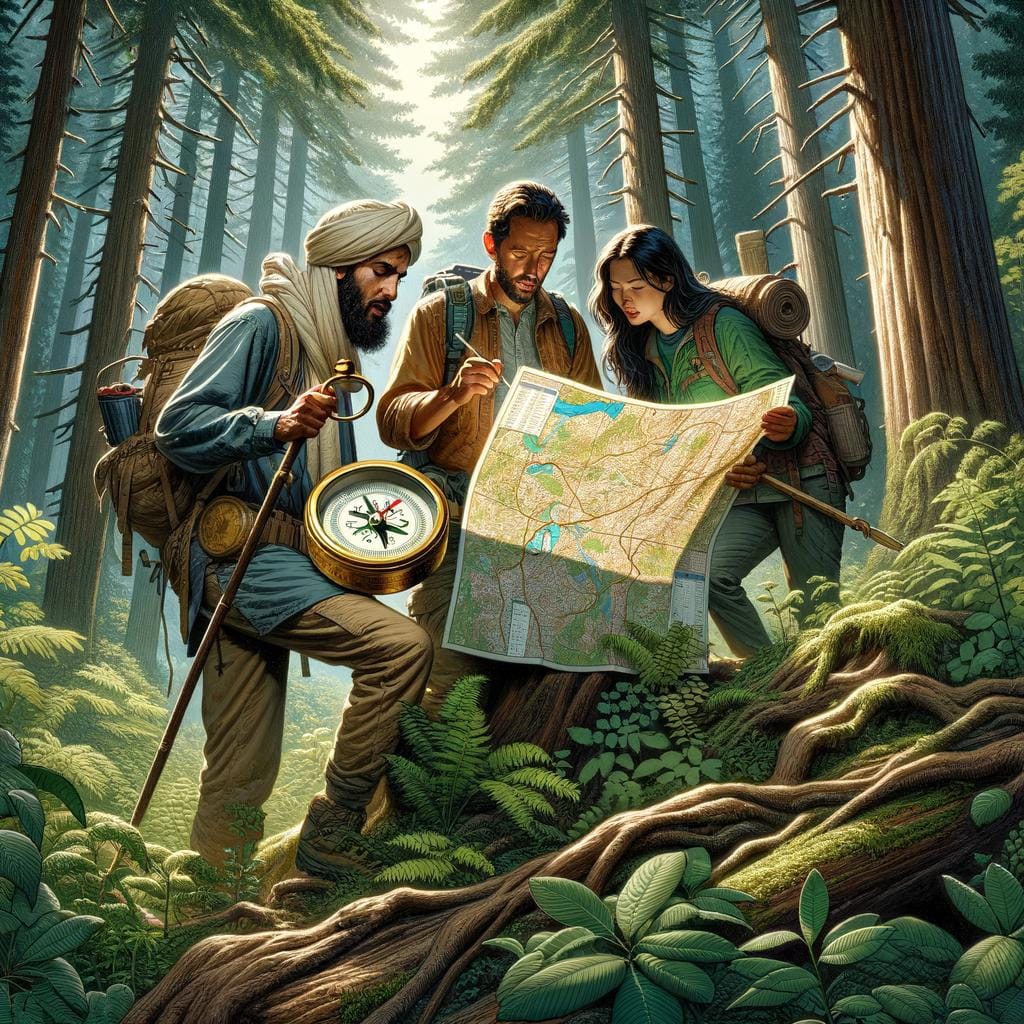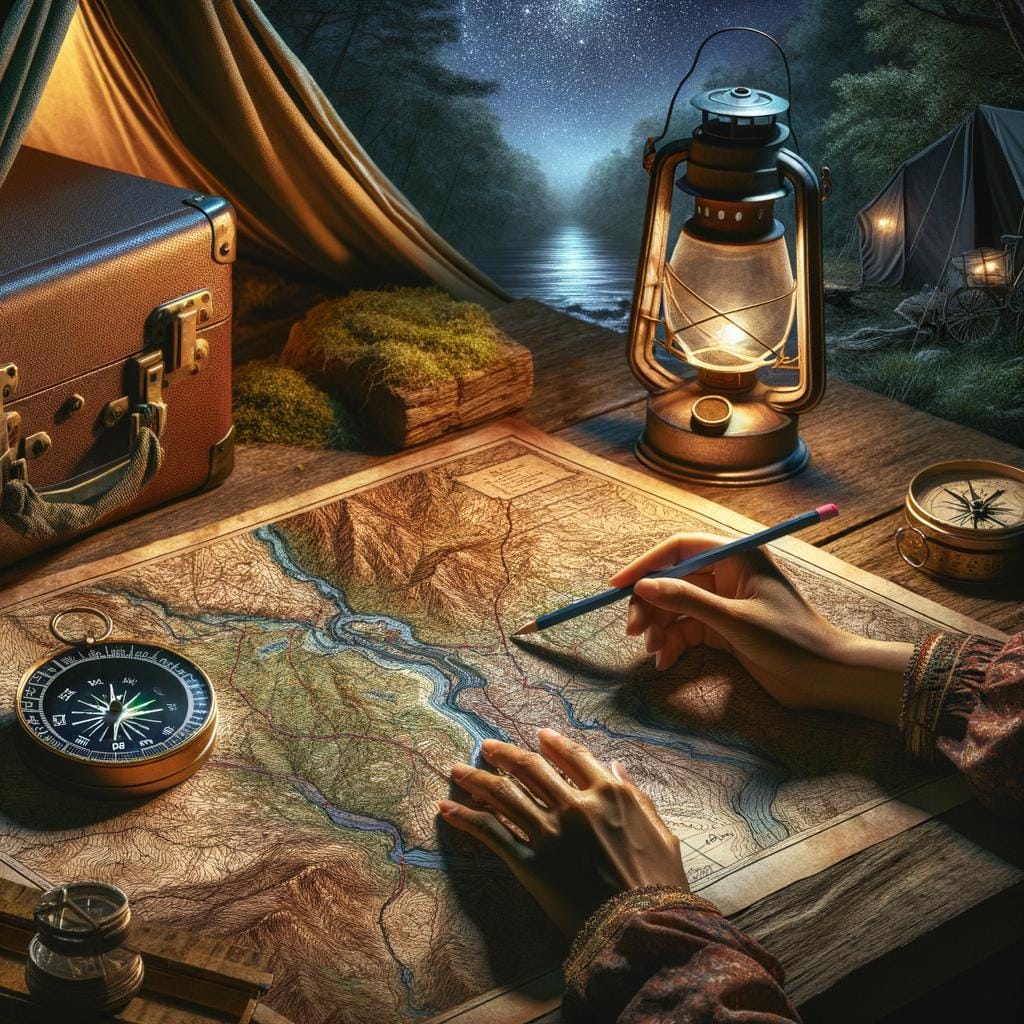For outdoor enthusiasts, the ability to navigate through the backcountry is a crucial skill that can make or break an adventure. Backcountry navigation involves using tools like maps, compasses, and GPS devices to find your way through remote and often challenging terrain. Whether you are hiking, backpacking, or camping in the wilderness, having a solid grasp of navigation techniques can ensure a safe and enjoyable experience.
Knowing how to read and interpret topographic maps is essential for successful backcountry navigation. These maps provide detailed information about elevation changes, terrain features, water sources, and more, allowing you to plan your route effectively. Additionally, understanding compass navigation basics is key for accurately determining directions and bearings while out in the wild. By combining map reading skills with compass use, outdoor enthusiasts can confidently navigate through unfamiliar landscapes.
In this article, we will delve into the importance of backcountry navigation and explore various aspects of navigating in the wilderness. From mastering topographic maps to using GPS devices and traditional methods like compasses, we will equip you with the knowledge and skills needed to navigate safely and efficiently during your outdoor adventures. So grab your gear and get ready to embark on a journey of exploration and discovery in the backcountry.
Understanding Topographic Maps
Topographic maps are invaluable tools for backcountry navigation, providing detailed information about the terrain, elevation changes, and natural features of an area. Understanding how to read and interpret these maps is crucial for outdoor enthusiasts who venture into the wilderness.
Contour Lines and Elevation
One of the key components of a topographic map is contour lines, which represent changes in elevation. By analyzing the spacing and shape of these lines, hikers can determine the steepness of slopes and identify valleys, ridges, and peaks. Contour lines that are closely spaced indicate steep terrain, while lines that are farther apart suggest gradual slopes.
Key Features and Symbols
Topographic maps are filled with symbols that represent various features such as roads, trails, bodies of water, and man-made structures. Understanding these symbols is essential for route planning and navigation. For example, a blue line signifies a river or stream, while a dashed line could indicate a trail or road. By familiarizing yourself with these symbols, you can accurately interpret the map and navigate your surroundings effectively.
Compass Navigation Basics
When venturing into the backcountry, having a compass and knowing how to use it effectively is crucial for successful navigation. A compass is a reliable tool that can help you find your way even when GPS signals are unreliable or unavailable. Here are some essential tips and techniques for using a compass to navigate in the wilderness:
- Understanding the basics: Before heading out on your adventure, make sure you know how to read a compass properly. Familiarize yourself with the different parts of a compass such as the magnetic needle, orienting arrow, and bezel.
- Setting your bearing: To navigate from one point to another, you need to set your bearing by aligning your compass needle with the orienting arrow. This will give you the direction you need to follow.
- Taking and following readings: As you move through the backcountry, periodically take readings with your compass to ensure you are staying on course. Make adjustments as needed to avoid veering off your intended path.
Having a good understanding of how to use a compass in conjunction with topographic maps can greatly enhance your navigational skills in the backcountry. Practice using your compass in different terrain types and challenging conditions to build confidence in your abilities. Remember, a compass should always be viewed as an essential backup tool alongside other navigation methods for reliable backcountry navigation.
Remember-the best way not to get lost in the first place is preparation. Familiarize yourself with your chosen route before setting out, study topographic maps ahead of time, and have multiple navigation tools at your disposal. Whether it’s navigating through dense forests, crossing mountain ridges, or traversing open fields, having strong backcountry navigation skills can make all the difference in keeping you safe and on track during your outdoor adventures.
GPS vs Traditional Navigation
When it comes to backcountry navigation, outdoor enthusiasts have a variety of tools at their disposal to help them find their way through remote and sometimes challenging terrains. One of the key decisions that adventurers need to make is whether to rely on traditional methods or modern technology such as GPS devices. In this section, we will explore the advantages and limitations of both approaches in backcountry navigation.
GPS Devices: Pros and Cons
GPS devices have revolutionized the way people navigate in the outdoors by providing accurate real-time location information. With satellite-based GPS systems, hikers and backpackers can pinpoint their exact location, track their routes, set waypoints, and even receive weather updates. This technology offers a level of convenience and precision that was once unimaginable. However, GPS devices rely on batteries and satellite connections, which may not always be reliable in remote areas with limited signal coverage.
Traditional Navigation Methods: Advantages and Challenges
On the other hand, traditional navigation methods like map reading and compass use have stood the test of time for centuries. These skills are essential for understanding terrain features, contours, bearings, and distances without relying on electronic devices. Mastering traditional navigation techniques can provide a deeper connection to the environment and enhance situational awareness. However, these methods require practice, skill development, and may not always be as quick or precise as using GPS devices.
Choosing the Right Approach
Ultimately, the decision between using GPS devices or traditional navigation methods boils down to personal preference, skill level, terrain complexity, trip duration, and reliability considerations. Some outdoor enthusiasts prefer a combination of both approaches to leverage the strengths of each method while mitigating their weaknesses. Regardless of your choice, being proficient in both GPS technology and traditional navigation skills is crucial for safe and successful backcountry exploration.
Land Navigation Tools and Gear
Land navigation in the backcountry is a skill that every outdoor enthusiast should master to ensure a safe and enjoyable outdoor experience. One of the essential components of successful backcountry navigation is having the right tools and gear at your disposal. These tools not only help you find your way but also provide a sense of security when venturing into remote areas. Some must-have tools for backcountry navigation include compasses, maps, GPS devices, and other navigational aids.
A reliable compass is a fundamental tool for backcountry navigation. It allows you to determine directions, orient yourself on a map, and follow a specific bearing to reach your destination. When choosing a compass, opt for one that is easy to use, durable, and has adjustable declination settings for accurate navigation. Additionally, it’s crucial to learn how to use a compass effectively before heading out into the wilderness.
Topographic maps are another indispensable tool for backcountry navigation. These maps provide detailed information about terrain features, elevation changes, water sources, and trails in a specific area. By understanding how to read and interpret topographic maps, you can plan your route more efficiently, identify potential hazards, and stay on course during your outdoor adventures. When using topographic maps for navigation in the backcountry, always carry a waterproof map case to protect them from the elements.
In addition to compasses and maps, GPS devices have become increasingly popular among outdoor enthusiasts as a navigational aid in the backcountry. GPS devices offer real-time tracking of your location, waypoints marking, route planning capabilities, and other advanced features that can enhance your navigational accuracy.
However, it’s important to note that while GPS technology can be valuable in backcountry navigation, it should not replace traditional navigation skills such as map reading and compass use. Always carry extra batteries or a portable charger for your GPS device to ensure it remains operational throughout your journey.
| Backcountry Navigation Tool | Benefits |
|---|---|
| Compass | Determines direction accurately |
| Topographic Maps | Provides detailed terrain information |
| GPS Devices | Real-time tracking and route planning capabilities |
Navigating in Challenging Terrain
Navigating through challenging terrains in the backcountry requires a combination of skills, knowledge, and preparedness. Whether you find yourself trekking through dense forests, navigating mountain ridges, or traversing rugged terrain, having a solid understanding of backcountry navigation is essential. Here are some strategies and techniques to help you navigate through challenging terrains effectively:
- Study the Topography: Before embarking on your journey, study the topographic maps of the area you will be navigating through. Understanding the elevation changes, contour lines, and landmarks can give you a better idea of what to expect and how to plan your route.
- Use Natural Landmarks: When navigating through challenging terrain, look for natural landmarks such as rivers, rock formations, or prominent peaks that can serve as reference points on your map. These features can help you stay oriented and prevent getting lost.
- Practice Dead Reckoning: In situations where visibility is limited, such as dense forests or foggy conditions, dead reckoning can be a useful technique. By tracking your distance and direction traveled from a known point on your map, you can estimate your current location even without clear visual cues.
In addition to these strategies, being equipped with the right tools and gear is crucial for navigating through challenging terrains in the backcountry. Make sure to have a reliable compass, topographic map, GPS device (if available), and other essential navigation aids. Stay alert, keep track of your surroundings, and always have a backup plan in case unforeseen circumstances arise while navigating in challenging terrain.
Remember that developing proficiency in backcountry navigation takes practice and experience. By honing your skills through hands-on training and actively applying navigational techniques in various terrains, you can become a more confident explorer capable of safely navigating through any backcountry environment. So go out there, explore new horizons, but always prioritize safety and preparedness when venturing into the wilderness.
Emergency Navigation
Getting lost in the backcountry can be a frightening experience, but with the right knowledge and skills, you can navigate your way back to safety. In case you find yourself disoriented or unsure of your location, it’s important to stay calm and assess your surroundings.
Take a moment to stop and try to pinpoint any landmarks or features that can help you determine your position on a map. If you have a compass, use it to orient yourself and identify which direction you need to travel in order to reach familiar terrain.
If you have access to a topographic map, use it to plot out your current location based on known landmarks or features. Look for prominent terrain features such as peaks, valleys, or streams that can serve as reference points for navigation.
By cross-referencing these with what you see in your surroundings, you can create a mental picture of where you are and where you need to go. Remember to consider factors like elevation changes and obstacles that may impede your progress along the way.
In situations where visibility is limited due to inclement weather or darkness, it’s crucial to prioritize safety over navigation. Consider finding a sheltered spot where you can wait out the conditions until they improve. If necessary, signal for help using an emergency whistle, mirror, or signaling device.
Always make sure someone knows your itinerary before heading into the backcountry so that if all else fails, search and rescue teams can be alerted promptly. With proper preparation and knowledge of backcountry navigation techniques, you can increase your chances of safely finding your way out of any unforeseen circumstances in the wilderness.
Developing Navigation Skills
In conclusion, mastering backcountry navigation is a vital skill for outdoor enthusiasts venturing into the wilderness. The ability to understand and interpret topographic maps, use a compass effectively, and utilize GPS devices or traditional methods can make all the difference in ensuring a safe and successful outdoor experience. Equipping oneself with the right tools and gear, such as compasses, maps, and GPS devices, is essential for navigating through challenging terrains like dense forests or mountain ridges.
It is important to remember that even with all the right tools at hand, unexpected situations can arise. Knowing what to do in case of emergencies or if you find yourself lost in the backcountry is crucial. Having a plan in place for emergency navigation and being able to navigate your way back to safety can be life-saving in dire situations.
By dedicating time to developing and honing your navigation skills through practical exercises and tips, you can enhance your confidence as an explorer. With perseverance and practice, you can become adept at backcountry navigation and embark on more challenging adventures with a greater sense of preparedness and security. So get out there, explore with caution, and always prioritize safety when navigating the vast wonders of the backcountry.
Frequently Asked Questions
What Is BackCountry Navigator?
BackCountry Navigator is a popular GPS app designed for outdoor enthusiasts who enjoy activities such as hiking, camping, off-roading, and hunting. It allows users to navigate through remote areas using offline topographic maps and GPS technology.
What Is the Best Mapping Tool for BackCountry Skiing?
The best mapping tool for backcountry skiing is one that offers detailed topographic maps, offline accessibility, and GPS tracking capabilities. Apps like Gaia GPS or AllTrails Pro are highly recommended for backcountry skiers due to their extensive mapping features and ability to track routes in real-time.
How Do I Learn Navigation for Hiking?
Learning navigation for hiking involves acquiring skills such as map reading, compass use, understanding topographic maps, and orienteering techniques. Beginners can benefit from taking classes, joining hiking groups, practicing in local parks, and gradually exploring more challenging trails to enhance their navigation skills.

An avid outdoor enthusiast, writer, and environmental advocate who has spent over two decades exploring the world’s most breathtaking landscapes. With a background in environmental science and a passion for adventure, Frances combines her love for nature with her talent for storytelling to inspire others to embark on their own outdoor journeys.





